This summer, the Backyard Buoys program connected with students throughout Alaska. In July, 45 middle school students participating in the Alaska Native Science and Engineering Program (ANSEP) visited the University of Alaska Southeast campus in Juneau for a week of exposure to various scientific fields. A group of Indigenous students from Hawaii also joined them for a week, exploring science as a potential career path.
Jill Prewitt, Joni Kitmiiq Spiess, and Alice Bailey from the Alaska Ocean Observing System (AOOS), and ANSEP intern Lease Patton, spent a full day with the students. Prewitt began by explaining how coastal communities in Alaska’s Arctic are deploying Sofar buoys to aid in navigation. In these communities, where ocean-based food security is vital, the buoys provide critical wave height data, helping residents determine when it’s safe to venture out or when they should wait for conditions to improve. In small groups, students practiced using a prototype wave buoy app and jumped on a trampoline to simulate how wave height data is generated and analyzed.
Joni Kitmiiq Spiess introduced the students to Indigenous subsistence practices relevant to their own communities while they are out on the ocean. Spiess demonstrated traditional hunting tools designed to minimize game loss while on the water. Students learned to use seal hooks, which are employed to retrieve animals in the water, and fabricated bolas for bird hunting. This experience complemented the buoy project, exposing students to both modern and traditional practices—each playing a vital role in maintaining healthy and thriving communities.
In August, AOOS and the Backyard Buoys program sponsored the BARC Science and Culture Fair, hosted by UIC Science in Utqiaġvik—the northernmost community in Alaska. Nearly 100 students from Arctic communities participated in the event, providing a platform for youth and community members to work alongside each other in an area that has been a hub for Arctic scientific research for decades. The impacts of environmental changes were evident that week, with summer temperatures reaching record highs across the North Slope.
At the science fair, AOOS highlighted the importance of ocean safety, an initiative that has seen success with partners like the Alaska Eskimo Whaling Commission. Holly Kent, Spiess, and Patton guided nearly 75 students of all ages in assembling small whaling boats. The students designed their own hunting flags for the boats, reflecting what they see in their communities and offering them a glimpse into their future roles as providers for their families.
Community engagement is invaluable, as collaboration fosters outcomes that benefit both science and subsistence lifestyles. By sharing educational curricula and activities across regions, we can learn from one another and continue to enhance these important initiatives.
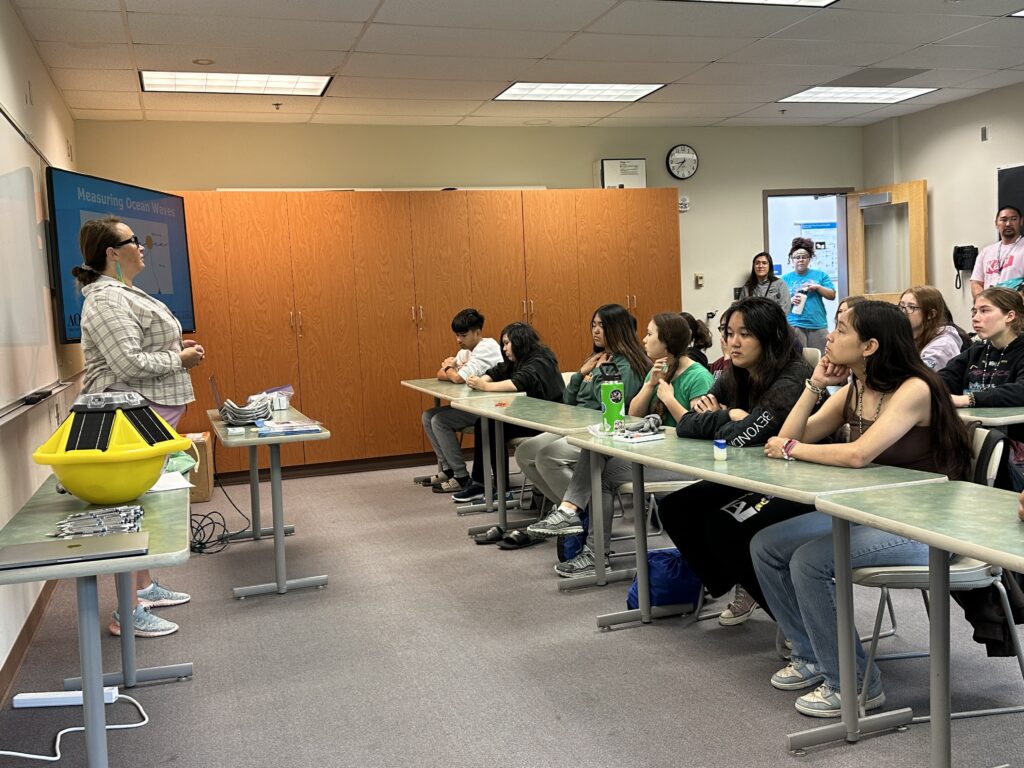
Joni Kitmiiq Spiess speaking to ANSEP middle school students in Juneau. Photo by Alice Bailey. 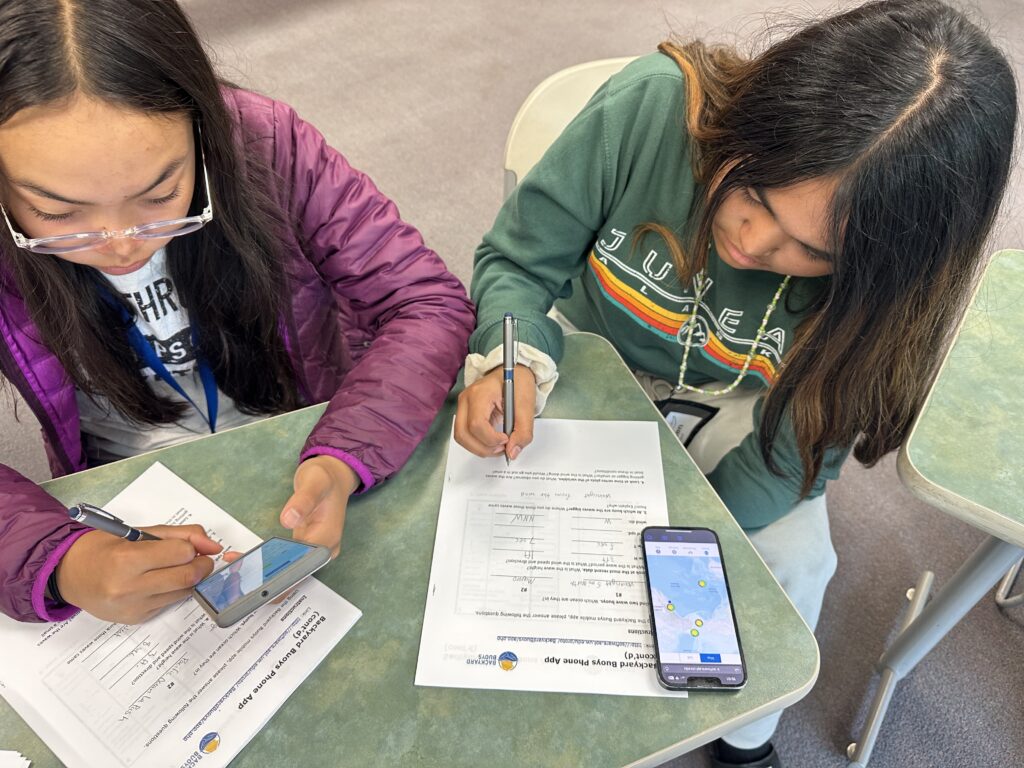
Students practice using the wave buoy app with worksheets provided by the Backyard Buoys program. Photo by Alice Bailey. 
Students gather around Joni Kitmiiq Spiess for a demonstration on building Bolas for bird hunting. Photo by Alice Bailey. 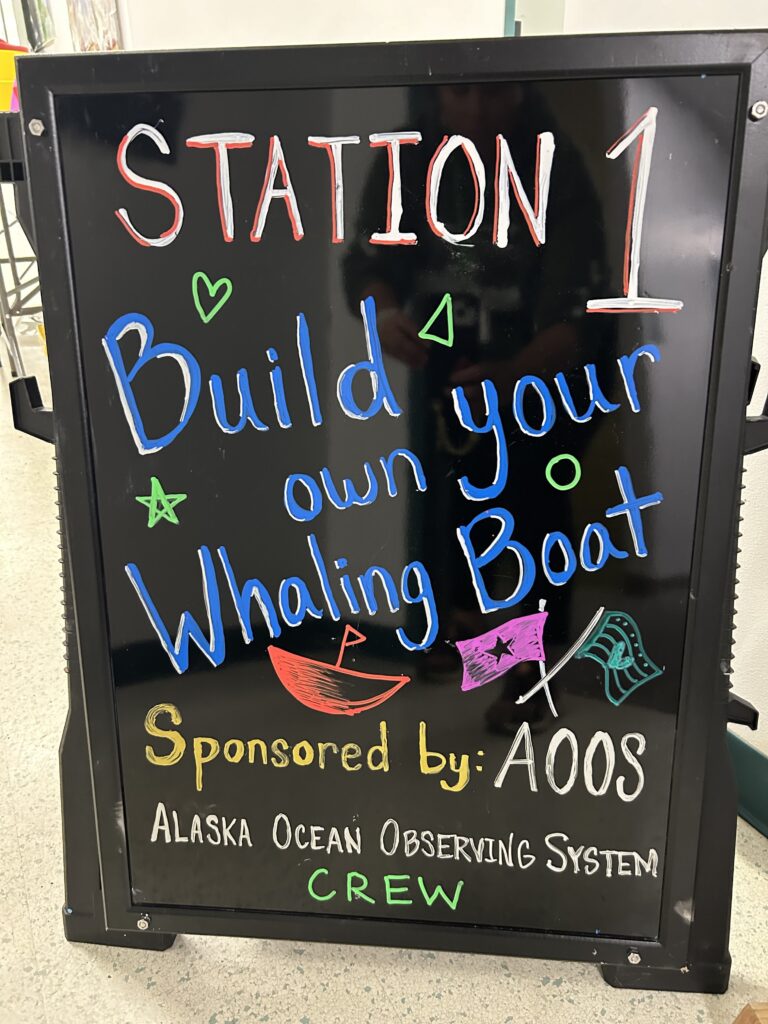
Over 75 youth convene in Utgiagvik for the BARC Science Fair hosted by UIC Science. Photo by Joni Joni Kitmiiq Spiess. 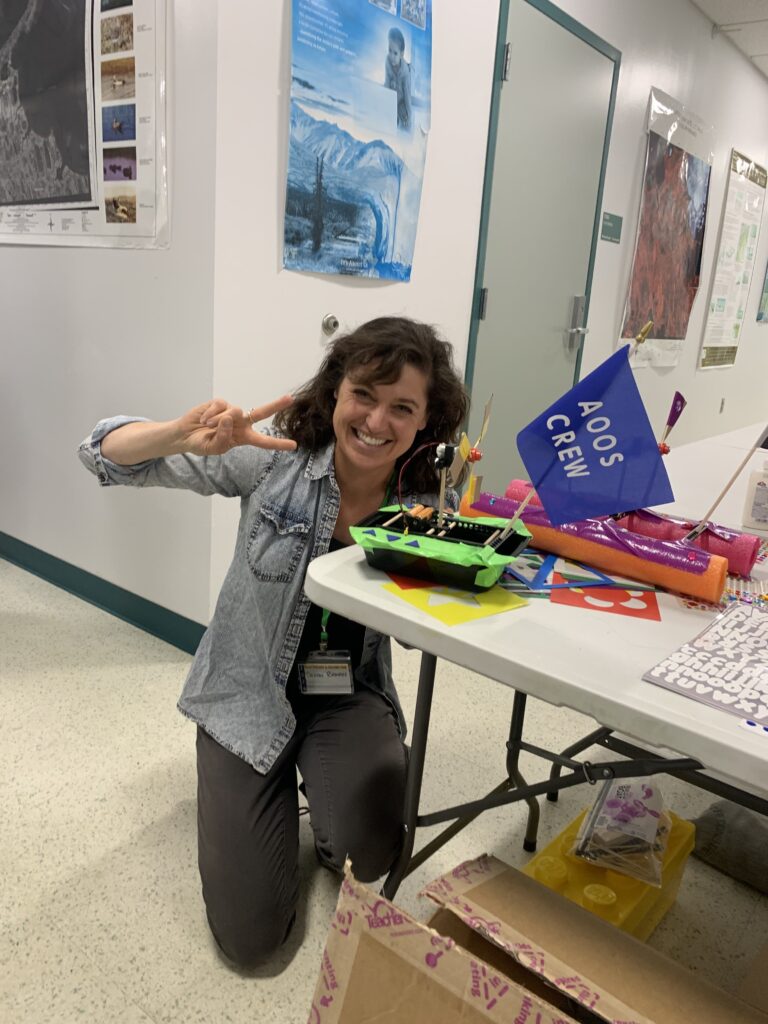
Sarah Bahan, new North Slope Borough employee, helps AOOS with the Build-a-whaling-boat activity. Photo by Holly Kent. 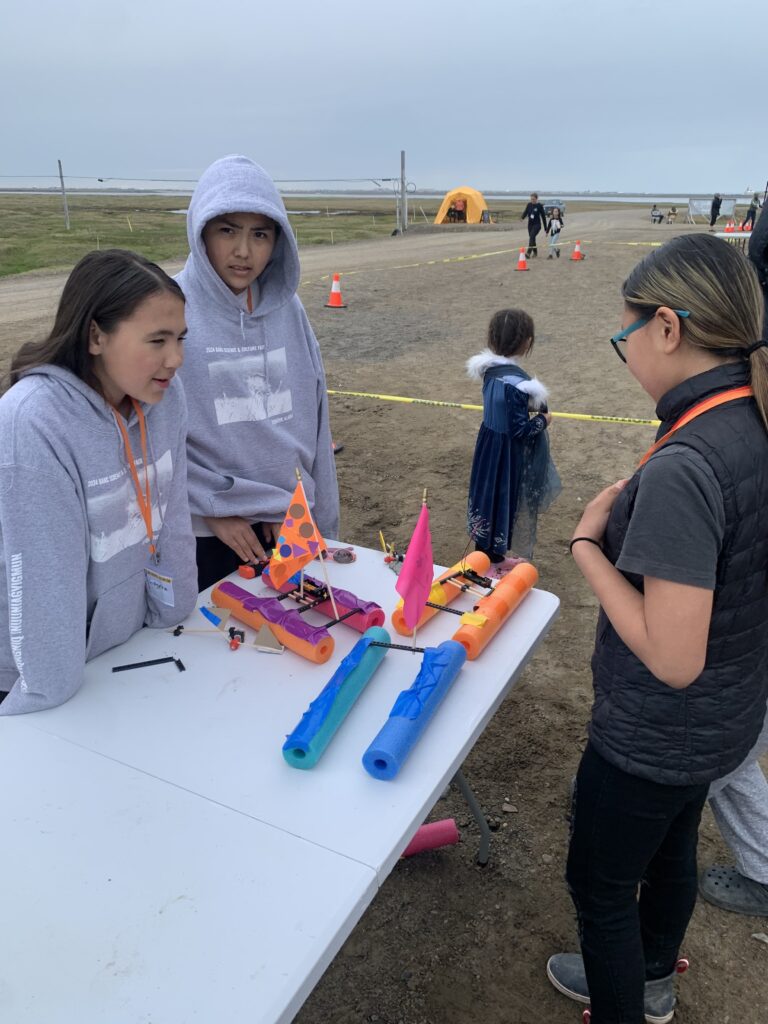
Build-a-whaling-boat builders compare their models. Photo by Holly Kent.